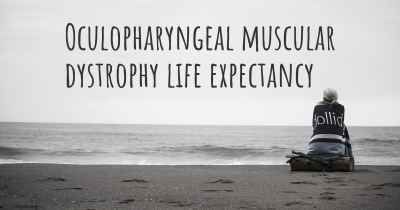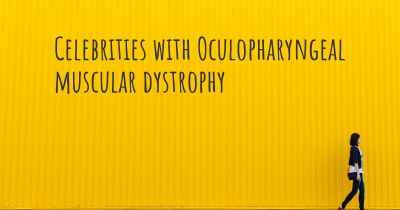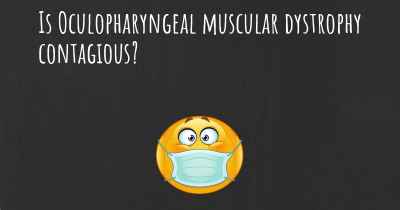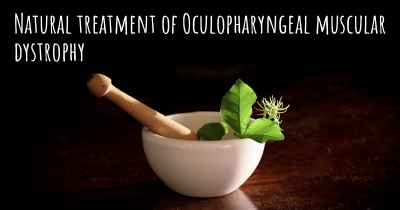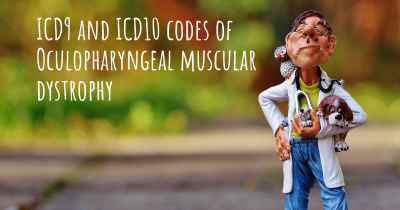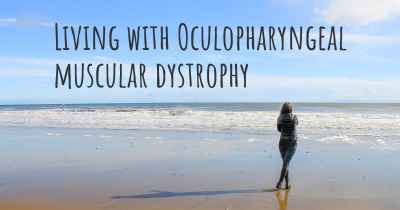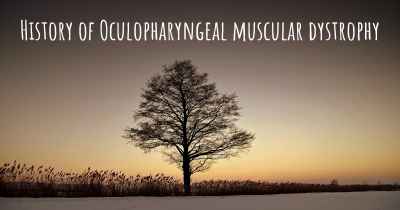Is Oculopharyngeal muscular dystrophy hereditary?
Here you can see if Oculopharyngeal muscular dystrophy can be hereditary. Do you have any genetic components? Does any member of your family have Oculopharyngeal muscular dystrophy or may be more predisposed to developing the condition?
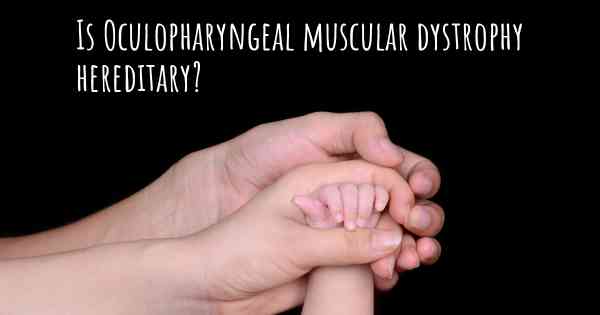
Oculopharyngeal muscular dystrophy (OPMD) is indeed a hereditary condition. It is caused by a genetic mutation that is passed down through families. OPMD affects the muscles of the eyes and throat, leading to difficulties in swallowing and droopy eyelids. The inheritance pattern of OPMD is autosomal dominant, meaning that an affected individual has a 50% chance of passing the condition on to their children. Genetic testing and counseling can help assess the risk of inheriting OPMD.
Oculopharyngeal muscular dystrophy (OPMD) is a rare genetic disorder that primarily affects the muscles of the eyes (oculo-) and throat (pharyngeal). It is characterized by progressive muscle weakness and wasting, leading to difficulties in swallowing (dysphagia) and droopy eyelids (ptosis). OPMD is caused by a mutation in the PABPN1 gene, which provides instructions for making a protein called poly(A)-binding protein nuclear 1.
Yes, Oculopharyngeal muscular dystrophy is hereditary. It is inherited in an autosomal dominant pattern, which means that a person only needs to inherit one copy of the mutated gene from either parent to develop the condition. If a parent has OPMD, there is a 50% chance of passing the mutated gene on to each child.
The PABPN1 gene mutation responsible for OPMD involves the expansion of a DNA segment called a trinucleotide repeat. In unaffected individuals, this segment contains a small number of repeats of the DNA building blocks cytosine, adenine, and guanine (CAG). However, in individuals with OPMD, the number of repeats increases significantly, leading to the production of an abnormal protein.
Although OPMD is hereditary, it does not mean that everyone who inherits the mutated gene will develop the condition. The age at which symptoms appear and the severity of the disease can vary among affected individuals, even within the same family. This phenomenon is known as variable expressivity.
OPMD typically manifests in adulthood, usually between the ages of 40 and 60. However, there have been cases where symptoms appeared earlier or later in life. The initial symptoms often involve weakness and drooping of the eyelids, which can progress to affect the muscles responsible for eye movement. This can result in double vision (diplopia) or difficulty in fully opening the eyes.
As the disease progresses, individuals with OPMD may experience difficulty swallowing (dysphagia) due to muscle weakness in the throat. This can lead to choking episodes, weight loss, and malnutrition. Some individuals may also develop weakness in other muscles, such as those in the limbs or face.
Diagnosis of OPMD involves a combination of clinical evaluation, genetic testing, and electromyography (EMG). During a clinical evaluation, a healthcare professional will assess the individual's symptoms, medical history, and perform a physical examination. Genetic testing can confirm the presence of the PABPN1 gene mutation.
EMG is a test that measures the electrical activity of muscles. In OPMD, EMG may reveal specific patterns of muscle involvement and help differentiate it from other forms of muscular dystrophy.
Currently, there is no cure for OPMD. Treatment primarily focuses on managing the symptoms and improving quality of life. This may involve a multidisciplinary approach, including speech therapy to address swallowing difficulties, physical therapy to maintain muscle strength and mobility, and occupational therapy to assist with daily activities.
Regular monitoring by healthcare professionals is essential to manage the progression of the disease and address any complications that may arise. In some cases, surgical interventions, such as eyelid surgery or feeding tube placement, may be necessary to alleviate specific symptoms.
Genetic counseling is recommended for individuals with OPMD and their families. A genetic counselor can provide information about the inheritance pattern, the likelihood of passing on the mutated gene, and the options available for family planning.
In conclusion, Oculopharyngeal muscular dystrophy is a hereditary condition caused by a mutation in the PABPN1 gene. It is inherited in an autosomal dominant pattern, meaning that a person only needs to inherit one copy of the mutated gene to develop the disease. However, the age of onset and severity of symptoms can vary among affected individuals. While there is currently no cure for OPMD, various treatments and therapies can help manage the symptoms and improve quality of life.
Posted May 18, 2017 by Monica 2150
Posted Oct 27, 2018 by Llauren 1300
Posted Jan 14, 2021 by Wendy 150
Posted Feb 22, 2021 by James 2500
